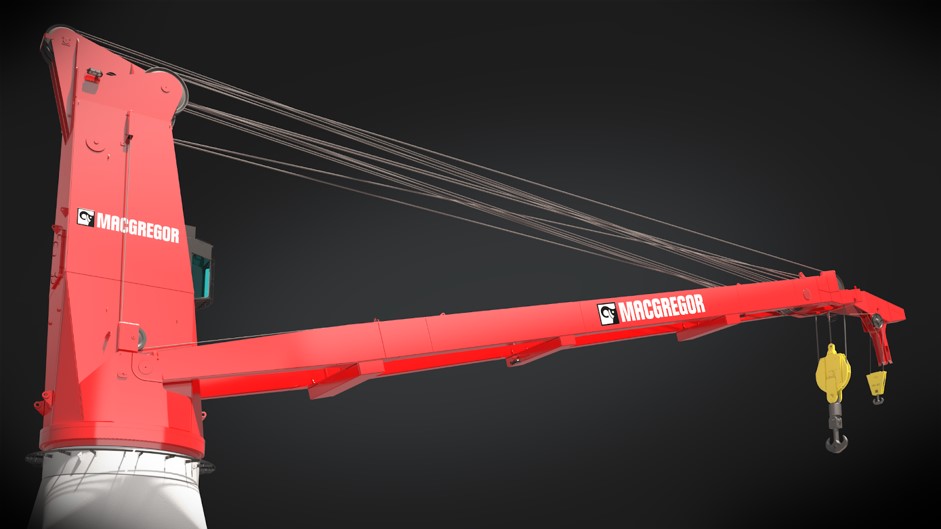
Products & Equipment
Ports
Sustainability
MacGregor debuts electrically driven heavy lift crane
December 15, 2021 By Bill Tremblay
 MacGregor has introduced the fully electrically driven heavy lift crane (HCE). Photo: MacGregor.
MacGregor has introduced the fully electrically driven heavy lift crane (HCE). Photo: MacGregor. To support its customers with more environmentally sustainable products and solutions, MacGregor has introduced the fully electrically driven heavy lift crane (HCE).
The new heavy lift crane is a result of combining MacGregor and NMF’s experience in the heavy lift industry. Both design philosophies were examined in detail, with the best elements combined to develop a crane that covers lifting capacity up to a safe workload of 1,000 tonnes.
The key benefits of the combined design are evident in the weight and drive system of the electrically driven heavy lift crane. By combining NMF crane house design principles with MacGregor high tensile steel experience, the weight of the HCE is significantly reduced. This has an advantage for the pedestal size and cargo capacity of the vessel.
As well, the new MacGregor Variable Frequency Drive (VFD) system improves HCE efficiency by up to 50 per cent compared to the traditional closed-loop hydraulic design. In addition, power consumption can be as much as 80 per cent lower during standby time for lashing and securing.
General VFD advantages including potential savings in capital expenditure, superior cargo handling and lower maintenance costs without the need to change oil, oil filters and hoses equally apply to the HCE.
Reliability and safety have also been improved through redundant power supply units, which enable high system availability and fault tolerance of critical components, as well as the use of additional brakes.
The HCE can be connected to the OnWatch Scout condition-based monitoring and predictive maintenance service, with the option to include several automation functionalities such as Auto-Drive and Auto-Tandem.
OnWatch Scout increases the flow of information and moves support from a reactive to proactive mode, with operational data streamed directly from the vessel, and used to provide guidance on performance. Shipowners and operators can maximize availability, earning potential and efficiency by:
- Minimizing unplanned downtime
- Monitoring component condition and predict potential critical performance issues
- Optimizing planned maintenance intervals through measurement of use and condition
Print this page